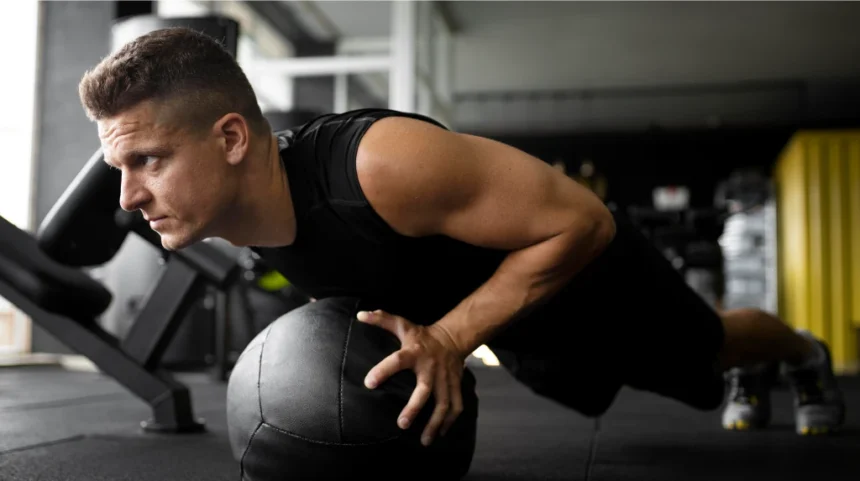Medicine Ball Close-Grip Push-Up: Exercise Overview
The medicine ball close-grip push-up is an advanced variation of the classic push-up, designed to intensify the challenge by targeting the triceps, pectoralis major (chest), and anterior deltoids (shoulders). By placing your hands on a medicine ball, this exercise introduces instability, engaging additional stabilizing muscles in the core and shoulders to maintain balance (Kohler et al., 2010). This dynamic movement enhances upper-body strength, improves coordination, and builds functional stability, making it ideal for athletes or those seeking to elevate their push-up routine. It can be incorporated into upper-body workouts, push-focused sessions, or full-body circuits to enhance muscle development and balance (Schoenfeld, 2010).
How to Perform the Medicine Ball Close-Grip Push-Up
- Place a medicine ball on a non-slip surface and assume a high plank position, positioning both hands on the ball, slightly closer than shoulder-width apart.
- Align your body in a straight line from head to heels, engaging your core and glutes to maintain stability.
- Bend your elbows, keeping them tucked close to your sides, and lower your chest toward the medicine ball in a controlled manner.
- Press through your palms to extend your arms, returning to the starting plank position while keeping the ball steady.
- Repeat for the desired number of repetitions, ensuring proper alignment and stability throughout.
- Modification: If needed, perform the exercise on your knees to reduce intensity while maintaining form.
Tips for Optimal Performance
- Prioritize Stability: Engage your core and glutes throughout to prevent your hips from sagging or the ball from rolling, reducing the risk of injury (McGill, 2010).
- Control the Movement: Lower and raise your body slowly to maximize muscle engagement and enhance the stabilizing effect of the medicine ball (Schoenfeld, 2016).
- Keep Elbows Tucked: Maintain close elbow positioning to emphasize triceps activation and reduce shoulder strain.
- Start with a Lighter Ball: Begin with a lighter medicine ball (e.g., 2–6 pounds) to master form before progressing to heavier weights for increased challenge.
- Breathe Properly: Exhale as you push up and inhale as you lower to support controlled movement and muscle oxygenation.
- Check Hand Placement: Position your hands securely on the ball to avoid slipping, and adjust grip width to ensure comfort and stability.
Equipment Required
- Medicine Ball: A weighted, typically rubber or leather ball ranging from 2 to 25 pounds, used for dynamic strength, core, and functional exercises. The medicine ball enhances instability, engaging multiple muscle groups to improve balance, coordination, and power (Kohler et al., 2010).
Boosting triceps and chest with close-grip push-ups? See how they enhance your training in our Ultimate Guide to Muscle Groups.








